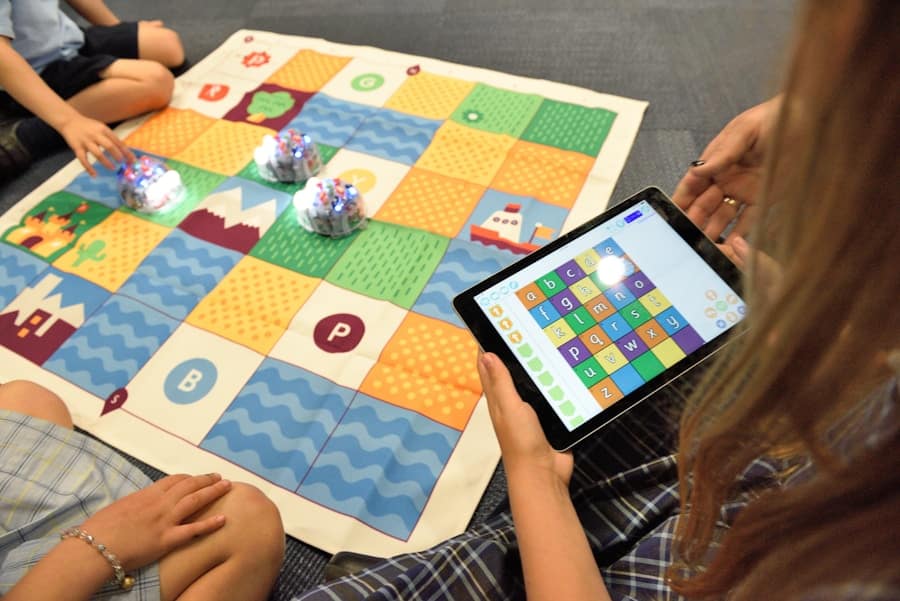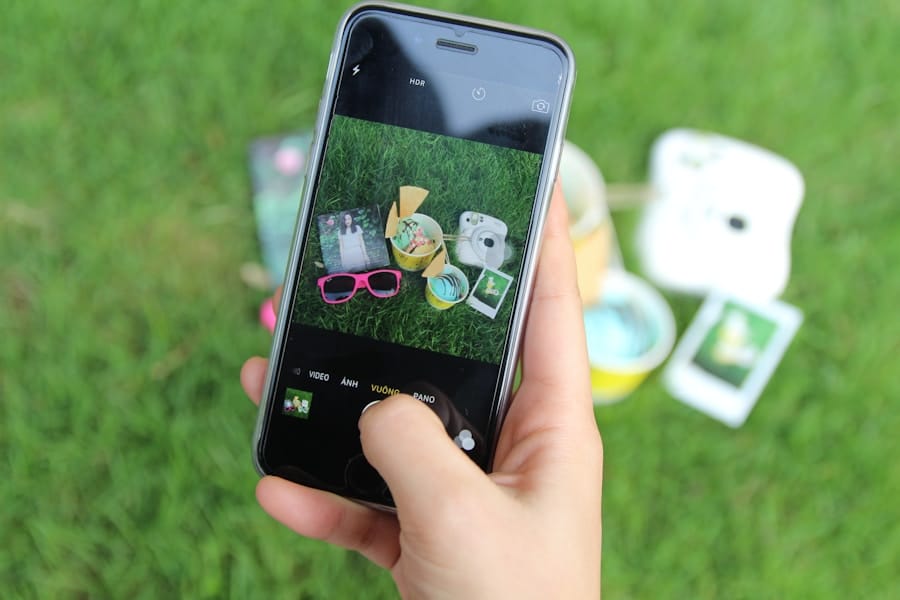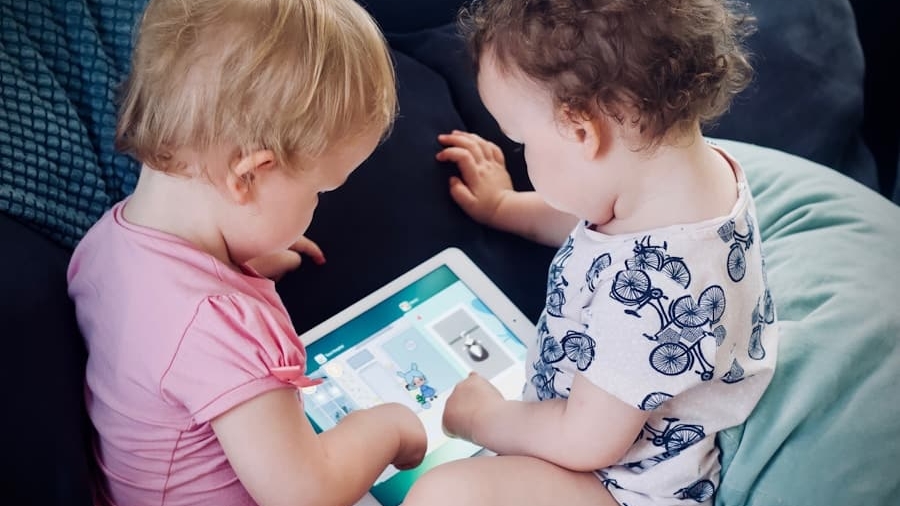Augmented Reality (AR) has emerged as a transformative technology in various sectors, and education is no exception. AR-powered educational flashcards represent a significant leap forward in how children engage with learning materials. Unlike traditional flashcards, which rely solely on text and images, AR flashcards incorporate digital elements that can be viewed through smartphones or tablets.
This integration of digital content with the physical world creates an interactive learning experience that captivates young learners’ attention and enhances their understanding of complex concepts. The concept of AR in education is not merely a novelty; it is grounded in cognitive science principles that emphasize active learning. By allowing children to visualize and interact with educational content in a three-dimensional space, AR flashcards can facilitate deeper comprehension and retention of information.
For instance, a flashcard depicting a dinosaur can come to life, allowing students to see its size, movement, and habitat, thereby enriching their learning experience. This innovative approach to education is reshaping how children absorb knowledge, making learning more engaging and effective.
Key Takeaways
- AR-powered educational flashcards combine traditional learning tools with augmented reality technology to create an interactive and engaging learning experience for children.
- The benefits of AR-powered educational flashcards for children include increased engagement, improved retention of information, and the opportunity for personalized learning experiences.
- AR-powered educational flashcards have the potential to positively impact children’s learning and development by catering to different learning styles, enhancing critical thinking skills, and fostering creativity.
- Challenges and limitations of AR-powered educational flashcards include the need for access to technology, potential distractions, and the importance of balancing screen time with other learning activities.
- The integration of AR-powered flashcards in classroom settings can enhance collaborative learning, provide real-world applications of concepts, and support teachers in delivering dynamic and interactive lessons.
Benefits of AR-Powered Educational Flashcards for Children
One of the most significant benefits of AR-powered educational flashcards is their ability to enhance engagement among children. Traditional learning methods often struggle to maintain the interest of young learners, who may find static images and text uninspiring. In contrast, AR flashcards provide a dynamic and interactive experience that captures children’s imaginations.
When a child points a device at a flashcard, they can witness animations, hear sounds, or even interact with 3D models. This multisensory approach not only makes learning fun but also encourages children to explore topics more deeply. Moreover, AR flashcards cater to various learning styles, accommodating visual, auditory, and kinesthetic learners.
For instance, visual learners benefit from the vivid imagery and animations that accompany the flashcards, while auditory learners can engage with narrated content or sound effects. Kinesthetic learners, on the other hand, can manipulate 3D models or participate in interactive quizzes that require physical movement. This adaptability ensures that all children can find a way to connect with the material, fostering a more inclusive learning environment.
Potential Impact on Children’s Learning and Development

The potential impact of AR-powered educational flashcards on children’s learning and development is profound. Research has shown that interactive learning experiences can lead to improved cognitive outcomes. By engaging with AR flashcards, children are not just passive recipients of information; they become active participants in their learning journey.
This active engagement promotes critical thinking skills as children analyze and synthesize information presented in an interactive format. Furthermore, AR flashcards can enhance memory retention. Studies indicate that when learners interact with content in a meaningful way—such as through visualization and manipulation—they are more likely to remember that information long-term.
For example, a child studying the solar system using AR flashcards can visualize the planets’ orbits and sizes, leading to a more profound understanding of astronomical concepts. This immersive experience can foster a love for learning and curiosity about the world around them, laying the groundwork for lifelong educational pursuits.
Challenges and Limitations of AR-Powered Educational Flashcards
Despite their numerous advantages, AR-powered educational flashcards are not without challenges and limitations. One significant hurdle is the accessibility of technology. While smartphones and tablets are increasingly common, not all families have access to these devices or the internet required to utilize AR applications effectively.
This digital divide can exacerbate existing inequalities in education, leaving some children at a disadvantage when it comes to accessing innovative learning tools. Additionally, there are concerns regarding screen time and its impact on children’s health and development. While AR flashcards aim to create an engaging learning experience, excessive use of screens can lead to issues such as eye strain, reduced physical activity, and social isolation.
Educators and parents must strike a balance between leveraging technology for educational purposes and ensuring that children engage in other forms of play and interaction that are equally important for their development.
Integration of AR-Powered Flashcards in Classroom Settings
Integrating AR-powered flashcards into classroom settings presents both opportunities and challenges for educators. On one hand, these tools can enhance lesson plans by providing interactive elements that complement traditional teaching methods. For instance, teachers can use AR flashcards during science lessons to illustrate complex biological processes or historical events, making the material more relatable and easier to understand for students.
However, successful integration requires adequate training for teachers and a well-thought-out implementation strategy. Educators must be equipped with the knowledge and skills to effectively incorporate AR technology into their curricula. This includes understanding how to select appropriate content, manage classroom dynamics when using technology, and assess student learning outcomes effectively.
Additionally, schools must ensure that they have the necessary infrastructure—such as reliable Wi-Fi and sufficient devices—to support the use of AR flashcards in the classroom.
Future Innovations and Trends in AR-Powered Educational Flashcards

The future of AR-powered educational flashcards is poised for exciting innovations as technology continues to evolve. One emerging trend is the incorporation of artificial intelligence (AI) into AR applications. AI can personalize learning experiences by adapting content based on individual student performance and preferences.
For example, an AI-driven AR flashcard app could analyze a child’s responses during quizzes and adjust the difficulty level or suggest additional topics for review based on their strengths and weaknesses. Another promising direction is the development of collaborative AR experiences that allow students to work together in virtual environments. Imagine a classroom where students can gather around a table with AR flashcards that project 3D models into their shared space.
They could collaborate on projects, conduct experiments, or engage in discussions while interacting with digital content in real-time. This collaborative approach not only enhances learning but also fosters teamwork and communication skills among students.
Parental Involvement and Support in Using AR-Powered Flashcards
Parental involvement plays a crucial role in maximizing the benefits of AR-powered educational flashcards for children. Parents can support their children’s learning by actively engaging with them during the use of these tools. For instance, they can participate in activities that involve AR flashcards, asking questions or encouraging discussions about the content being explored.
This collaborative approach not only reinforces learning but also strengthens the parent-child bond through shared experiences. Moreover, parents should be informed about the educational value of AR flashcards so they can make informed decisions about their use at home. By understanding how these tools can enhance their children’s learning experiences, parents can better support their academic growth.
Additionally, parents can help set boundaries around screen time to ensure that children benefit from both digital learning tools and traditional play activities that promote social interaction and physical development.
The Role of AR-Powered Educational Flashcards in Shaping the Future of Education
As we look toward the future of education, it is clear that AR-powered educational flashcards have the potential to play a transformative role in how children learn and engage with information.
While challenges such as accessibility and screen time must be addressed, the benefits of AR flashcards are undeniable.
The ongoing evolution of technology will likely bring even more innovative features to AR-powered educational tools, further enhancing their effectiveness in classrooms and homes alike. As educators, parents, and technology developers collaborate to harness the power of augmented reality in education, we may witness a new era of learning that empowers children to explore their interests and develop critical skills for the future. The integration of AR into educational practices signifies not just an enhancement of existing methods but a fundamental shift toward more engaging, personalized, and effective learning experiences for all children.
If you’re interested in enhancing educational tools for students, you may also want to check out NeuronWriter, a powerful tool for optimizing content with SEO and NLP techniques. This article discusses how NeuronWriter can help boost the effectiveness of educational materials by improving their visibility and engagement online.
FAQs
What are AR-powered educational flashcards for children?
AR-powered educational flashcards for children are physical or digital cards that use augmented reality (AR) technology to provide an interactive and immersive learning experience. When viewed through a compatible device such as a smartphone or tablet, the flashcards come to life with 3D animations, videos, and audio to engage and educate children on various subjects.
How do AR-powered educational flashcards benefit children’s learning?
AR-powered educational flashcards offer a more engaging and interactive learning experience for children compared to traditional flashcards. The use of AR technology can help improve children’s retention and understanding of educational concepts by providing a multisensory learning experience that appeals to visual, auditory, and kinesthetic learners.
What subjects can be taught using AR-powered educational flashcards?
AR-powered educational flashcards can be used to teach a wide range of subjects, including but not limited to language arts, mathematics, science, history, geography, and even social and emotional learning. The interactive nature of AR technology allows for creative and dynamic presentations of educational content across various disciplines.
What is the future potential of AR-powered educational flashcards for children?
The future potential of AR-powered educational flashcards for children is vast. As AR technology continues to advance, we can expect to see even more immersive and personalized learning experiences tailored to individual children’s needs and interests. Additionally, the integration of artificial intelligence and adaptive learning algorithms could further enhance the effectiveness of AR-powered educational flashcards in the future.

